
Castello Sforzesco: discovering the historic heart of Milan
Castello Sforzesco: the tickets most chosen by travelers
Castello Sforzesco in Milan: the historical soul in the heart of the metropolis
Milan's Castello Sforzesco is one of the most impressive and fascinating fortifications in Europe, located in the heart of the city. Built in the 15th century by Francesco Sforza, Duke of Milan, the castle stands on the remains of an earlier 14th-century medieval fortification known as Castello di Porta Giovia. Over the centuries, it underwent numerous extensions and renovations, becoming a ducal residence and a symbol of Milanese power.
Today, Castello Sforzesco is home to eight civic museums, including the Museum of Ancient Art, the Picture Gallery, the Museum of Musical Instruments, and the Museum of the Pietà Rondanini, which houses Michelangelo's last unfinished sculpture. Prominent among its rooms is the Sala delle Asse, frescoed by Leonardo da Vinci with an intricate weave of branches and leaves, recently restored and reopened to the public.
Surrounded by the greenery of Sempione Park, Castello Sforzesco is easily accessible and a must-see for those who wish to immerse themselves in Milan's history, art, and culture.
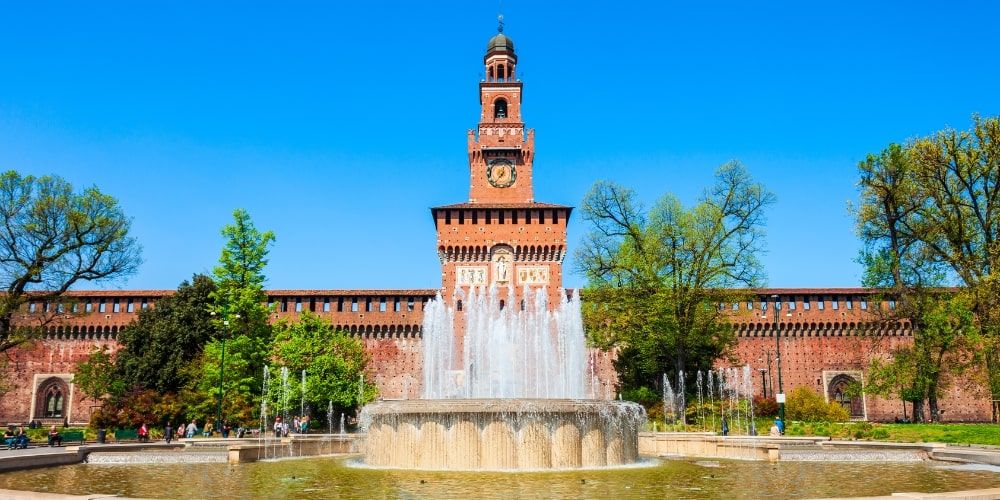
Useful information for visiting the Castello Sforzesco in Milan
Milan's Castello Sforzesco, located in Piazza Castello, is one of the city's most iconic attractions. Here is some practical information to better organize your visit.
Opening hours
- Courtyards: open daily from 7:00 am to 7:30 pm.
- Castle Museums: open Tuesday through Sunday, 10:00 am to 5:30 pm.
- Weekly closing: Monday.
- Last admission to museums: 5 pm; ticket office closes at 4:30 pm.
Accessibility
Milan's Castello Sforzesco is largely accessible to people with mobility disabilities. The courtyards and many museum areas have ramps and elevators, and accessible toilets are located near the main entrance. Assistance can be requested from staff at the ticket office to facilitate access to specific sections. In addition, tactile pathways and audio aids are available for visitors with visual and hearing disabilities, by reservation or advance request.
Castello Sforzesco: tips for your visit
How to arrive at the Castello Sforzesco in Milan
To reach Milan's Castello Sforzesco, located in Piazza Castello, there are several public transportation options and other means:
By subway
- Line 1 (red): Cairoli (the most convenient, opposite the main entrance) and Cadorna FN stops.
- Line 2 (green): Lanza and Cadorna FN stops, close to the secondary entrances of the castle.
By bus
Lines that stop near the castle include: 18, 37, 43, 50, 57, 58, 59, 61, 81, 84, 85, 94, N25, N26 and NM2.
By streetcar
The nearest streetcar lines are: 1, 2, 4, 12, 14, and 19.
By train
- The nearest train station is Milano Cadorna - Ferrovie Nord Milano, about 200 meters from the castle.
- From Milano Porta Garibaldi or Milano Centrale you can take Line 2 (green) of the subway and get off at Cadorna or Lanza.
- From Milan Porta Genova you can take Line 2 (green) towards Gessate/Cologno and get off at Cadorna or Lanza.
By car
Reaching Castello Sforzesco by car is not recommended, as it is located in the historic center of Milan with traffic restrictions. It is preferable to park in parking areas connected to the subway lines (red or green) and continue by public transport.
By plane
Milan is served by three main airports: Linate, Malpensa, and Orio al Serio. From these airports you can take public transportation to the city center and then continue by metro, bus, or streetcar to the castle.
The best experiences in Milan
Best attractions around Castello Sforzesco
all entrance tickets for the most popular Italian attractions
Milan like a local: 10 things to do
Do you want to visit Milan like a local? Then check out 10 things to do to live in the city like a true Milanese.
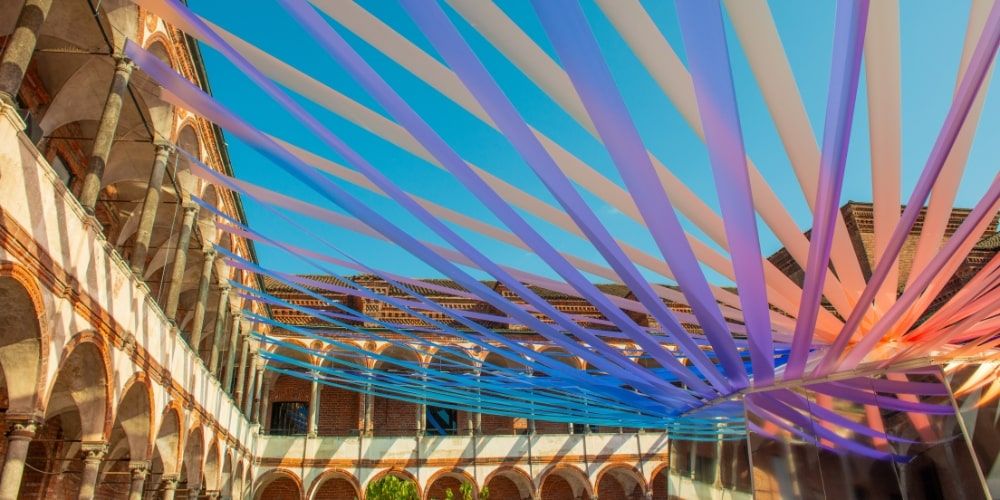
Frequently asked questions about Castello Sforzesco in Milan
What is the history of Castello Sforzesco, and who built it?
Milan's Castello Sforzesco was built in 1450 by Francesco Sforza, newly appointed Duke of Milan, on the remains of the earlier Castello di Porta Giovia, erected in the 14th century by the Visconti family. Originally conceived as a defensive fortress, the castle was later enlarged and transformed into a ducal residence, becoming a symbol of Sforza's power.
Is Castello Sforzesco suitable for a visit with children?
Yes, Milan's Castello Sforzesco is ideal for a visit with children. It offers educational activities and creative workshops for different age groups, such as “The Carousel of Colors” (ages 4-5) and “Symbols, Codes and Secret Messages” (ages 7-11). In addition, interactive guided tours and educational kits are available to make the experience engaging and educational.
What can you see in Leonardo da Vinci's Sala delle Asse?
The Sala delle Asse in the Castello Sforzesco, frescoed by Leonardo da Vinci in 1498 on commission from Ludovico il Moro, features an extraordinary decoration: an arbor of eighteen mulberry trees whose branches intertwine on the vault, creating a trompe-l'œil effect. In the center of the ceiling stands the Sforza coat of arms, while on the east wall is a Monochrome depicting roots penetrating rocky layers, a symbol of the strength and stability of the duchy. This masterpiece combines art, botany, and political symbolism, representing one of the most significant testimonies of Leonardo's genius in Milan.
How much time is recommended to spend visiting Castello Sforzesco?
The recommended length of time to visit Milan's Castello Sforzesco varies. A walk through the exterior courtyards takes about 30-45 minutes. For a more in-depth exploration of the interior museums, it is advisable to devote 2-3 hours. For a complete visit, including museums and temporary exhibitions, it is suggested to plan 4-5 hours.
Visiting Milan's Castello Sforzesco through its main tours
Visiting Milan's Castello Sforzesco means exploring one of the city's most iconic and fascinating places, where art, history, and architecture intertwine in a centuries-old tale. The best way to experience this is to choose one of the many exclusive formulas that allow you to discover every corner of the castle, from the inner courtyards to the rooms frescoed by Leonardo da Vinci.
If you wish to avoid the queues, the entrance ticket with digital audio guide allows you to visit the castle's museums in total autonomy, listening to curiosities and stories directly from your smartphone.
For a more immersive experience, you can opt for a guided tour that also includes access to Michelangelo's famous Pietà Rondanini, one of the most exciting masterpieces of Italian art.
There are also combination passes that include the Castello Sforzesco along with other Milanese attractions, such as the Duomo and the Last Supper, ideal for those who want to discover the best of the city with one convenient and affordable solution.
Outdoor spaces of the Sforza Castle in Milan
The outdoor spaces of Milan's Castello Sforzesco offer a fascinating journey through history, architecture and art in the open air. The Cortile delle Armi (Weapons Courtyard), the largest, welcomes visitors with historical artifacts such as late Roman sarcophagi and architectural fragments, turning into a veritable open-air museum. Continuing on, you enter the Corte Ducale, an elegant porticoed area that once housed the apartments of the dukes; here you can admire Renaissance frescoes and fine architectural details.
Finally, the Cortile della Rocchetta represented the defensive core of the castle, with fortified structures and towers that tell of the building's military function. All three courtyards are freely accessible and interconnected.
Curiosità su Castello Sforzesco
The Castello Sforzesco, built in 1450 by Francesco Sforza, still dominates the heart of Milan with its imposing quadrangular structure. Rising on the ruins of the earlier Castello di Porta Giovia, it was transformed from a defensive fortress to a sumptuous Renaissance residence. Today's Filarete Tower is a 1905 reconstruction by architect Luca Beltrami: the original one exploded in 1521, struck by lightning while holding gunpowder.
Un angolo poco noto del castello è la cosiddetta “Saletta Negra”, un ambiente raccolto e oscurato dove si dice che Ludovico il Moro si ritirasse a piangere la morte dell’amata moglie Beatrice d’Este. Un altro elemento curioso è la “nevera”, una ghiacciaia naturale usata dagli spagnoli per conservare il cibo, ben prima dell’invenzione del frigorifero.
A little-known corner of the castle is the so-called “Saletta Negra,” a secluded and darkened room where Ludovico il Moro is said to have retired to mourn the death of his beloved wife Beatrice d'Este. Another curious feature is the “nevera,” a natural icebox used by the Spanish to preserve food, long before the invention of the refrigerator.
Architectural oddities also include a bas-relief considered obscene, the meaning of which is still debated today. According to some studies based on drawings by Leonardo da Vinci, underground tunnels directed toward Santa Maria delle Grazie departed from the castle and were used for secret movements and escape routes during periods of conflict—a castle, then, where every stone tells a story.





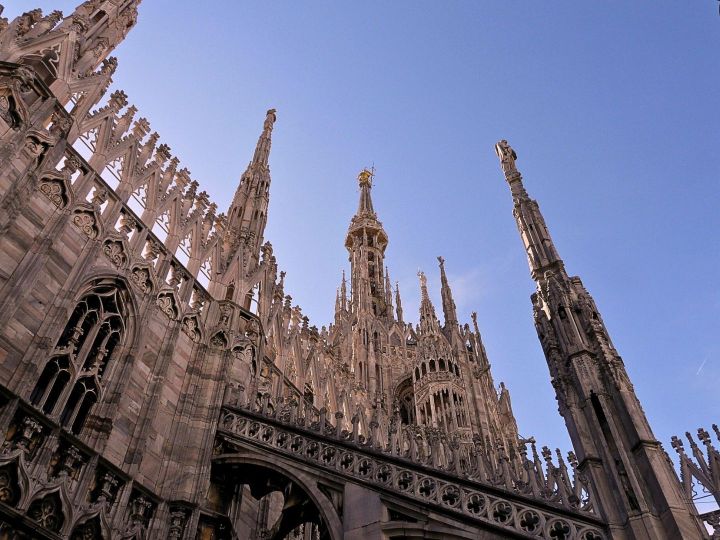

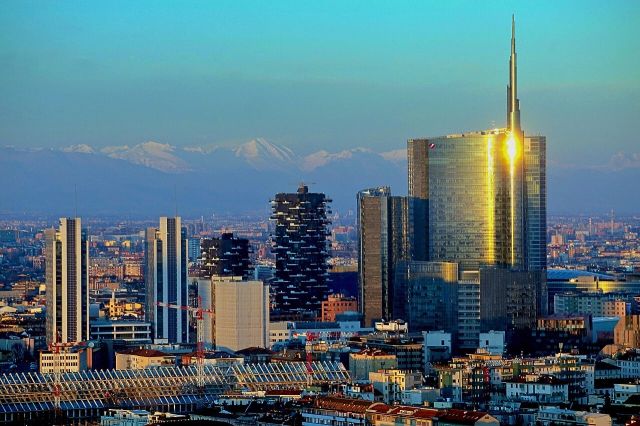

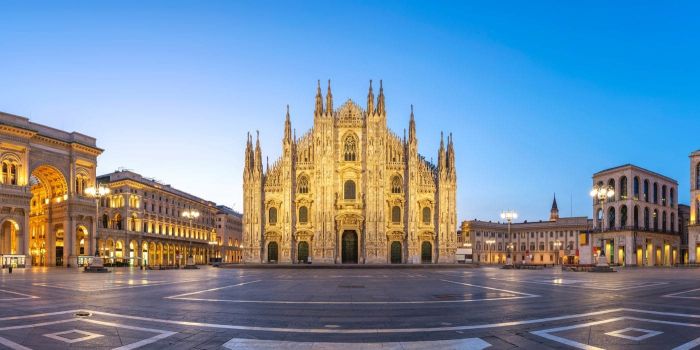
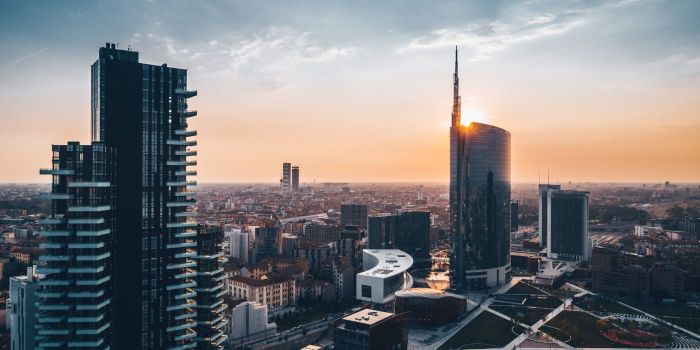
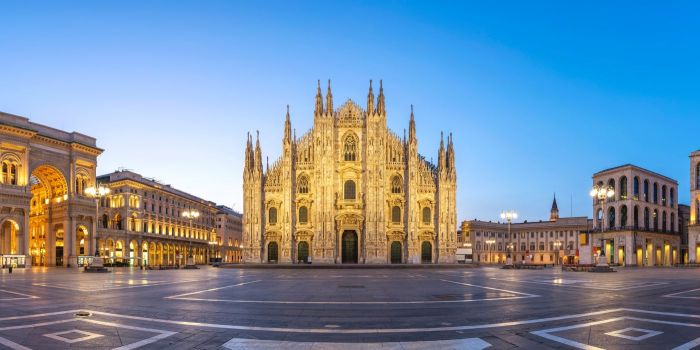
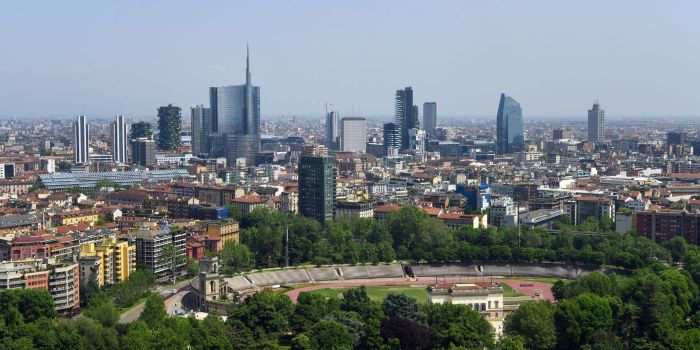









Rossella Friggione
From Leonardo's Sala delle Asse to the masterpieces of the Pietà Rondanini: what to see at Castello Sforzesco.